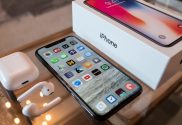The Internet of Things (IoT) may be about to transform almost every aspect of people’s lives. Health care is one industry already seeing significant adoption of IoT technology. Connected medical devices are helping doctors and nurses remotely monitor patients, access health data, and conduct follow-ups online. As a result, IoT in health care could revolutionize the industry over the next few years.
How Does the Health Care Industry Use Connected Devices?
The Internet of Medical Things (IoMT) includes various devices used inside and outside health care facilities. In most cases, these items provide a few of the same benefits — including streamlined treatment, reduced risk of error, and greater availability of critical data, like information on patient vitals.
Smart Patient Monitoring Devices
One popular application of IoT in health care is the smart patient monitor. This device continuously collects health care information from a patient, including data on heart rate, blood pressure, temperature, and blood oxygen levels.
These devices help make patient health data more accessible to doctors and nurses inside facilities. A patient’s medical team can quickly and remotely check their vitals from a hospital workstation or a secure device anywhere in the world. The smart patient monitor can also alert staff if someone’s vitals exceed safe levels.
Smart health care wearables and remote patient monitors allow doctors to continue tracking patient vitals without requiring them to remain in the facility. In addition, people who have been recently discharged from the hospital may bring smart patient monitors with them, allowing them to send important health information to doctors without having to return to the hospital for a follow-up. They can also access this information and get a valuable window into their post-release health.
The patient and their doctor can discuss any concerning health information over the internet using a telemedicine video call solution. The doctor can also immediately recall the patient to the hospital if the monitor suggests their health is in danger.
Various IoMT patient monitoring devices exist, ranging from large machines built for hospital settings to lightweight health-tracking wearables people can take with them wherever they go.
Specific use-cases for IoMT monitoring technology include general-purpose smart patient monitors, motion sensors that track the progression of Parkinson’s disease symptoms, and mood sensors that can help doctors manage a patient’s mental health.
Smart Infusion Pumps and Medication Delivery Devices
Correctly dosing and delivering medicine is essential for patient treatment. However, medication errors remain a common challenge in many medical environments. These mistakes can cause serious injuries or adverse reactions that can lead to death.
The IoMT can help prevent medication errors by streamlining the dosing process and delivering IV medicine.
Smart infusion pumps are medication delivery devices that use innovative technology, barcode readers, and drug information libraries to reduce risk when administering IV medicine. The health care worker will designate an area of use — like the adult ICU or NICU — which will automatically configure the pump based on needs. The clinician will then select the medicine they need to administer from an internet drug library, select a concentration and configure the pump’s dose.
Information from the drug library will help prevent some of the most common medication errors — like dosing mistakes and combinations that may lead to health problems.
Some pumps may require that the clinician scans the drug using a barcode on its packaging rather than choosing one from a list.
Most pump systems incorporate a few safeguards that will help reduce the frequency of medication errors. For example, the pump may include the height and weight information of the patient receiving a drug, helping ensure they receive the appropriate dose.
The pump system may also include information on average drug concentrations and dosing units. As a result, it can double-check with health care workers to ensure an unusual dosage is correct, potentially preventing medication errors.
Smart Device Scanners
Manufacturers will often use laser marking to create a unique device identifier (UDI) codes on the surface of connected medical devices like orthopedic implants and medical instruments. They provide a wealth of information about the marked device — including the specific version or model number.
Under current regulations, the manufacturer must provide this code in plain language and a machine-readable format.
Smart medical scanners can read the second version of the UDI instantly, draw on relevant information from cloud-based databases and update records. This makes them a powerful tool for conducting inventory, determining an instrument’s specific model or lot number, and verifying the plain-language portion of a UDI.
These devices are connected to the internet, so they can also be used to update cloud-based records as they scan automatically. For example, hospitals that maintain an online database of critical medical instruments can use a smart scanner to update it with new products.
In practice, these scanners can also make it much easier for health care organizations to comply with traceability requirements. For example, clinicians can use information from the UDI to quickly verify the model number, expiration date, and recall status of a medical instrument or device before it is used.
Clinicians that locate faulty or expired equipment can quickly remove it, ensuring it won’t be used for a procedure.
Smart Pills, Capsules and Medications
New smart pills and capsules can help patients take their medications regularly. They are outfitted with special sensors that activate when they hit the acid in a patient’s stomach. They then communicate with a wearable medical device — like a patch on someone’s chest — signaling that the pill has been taken.
The wearable device that receives the signal can automatically generate a log or report showing the medication was taken successfully.
The connected medical device can also track other information — like the patient’s activity and rest times.
The first smart pill approved by the FDA was Abilify Mycite, which contains aripiprazole, an antipsychotic used to treat conditions like schizophrenia and bipolar disorder. Patients with these conditions may struggle to remember if they’ve taken their medicine, but missing a dose can cause adverse reactions — including nausea, lightheadedness, anxiety, and a return of symptoms associated with the mental health condition the aripiprazole is meant to treat.
The smart system can help patients track their medication adherence and review patterns when they take their medicine.
Smart pills are not widely used yet, but they may soon help patients and health care providers improve medication adherence and track home-usage.
Future smart pills may also provide additional functionality. For example, those containing onboard sensors could help doctors track a patient’s core temperature, detect intestinal bleeding, or keep tabs on gut health. Many of these pills already exist in an experimental capacity and may become commercially viable by the end of the decade.
The Future of Connected Medical Devices and IoT in Health Care
Connected medical devices can make providing effective health treatment much easier. The right one can streamline care, reduce error risk, and simplify record-keeping.
IoT in health care is growing fast over the next few years. According to Fortune Business Insights, the market may be worth as much as $187.6 billion by 2028, up from just $41 billion in 2020. As a result, new applications of smart medical technology may become widely available.
For example, it may also become standard for health care facilities to adopt connected robots, like those used in Italian hospitals during the early days of the COVID-19 pandemic.
Currently used IoMT devices — from smart monitors to smart pills — will likely become much more common over the next few years as the market expands and health care facilities look to adopt devices that make daily work easier.
Image Credit: Provided by the Author; National Cancer Institute; Unsplash; Thank you!





